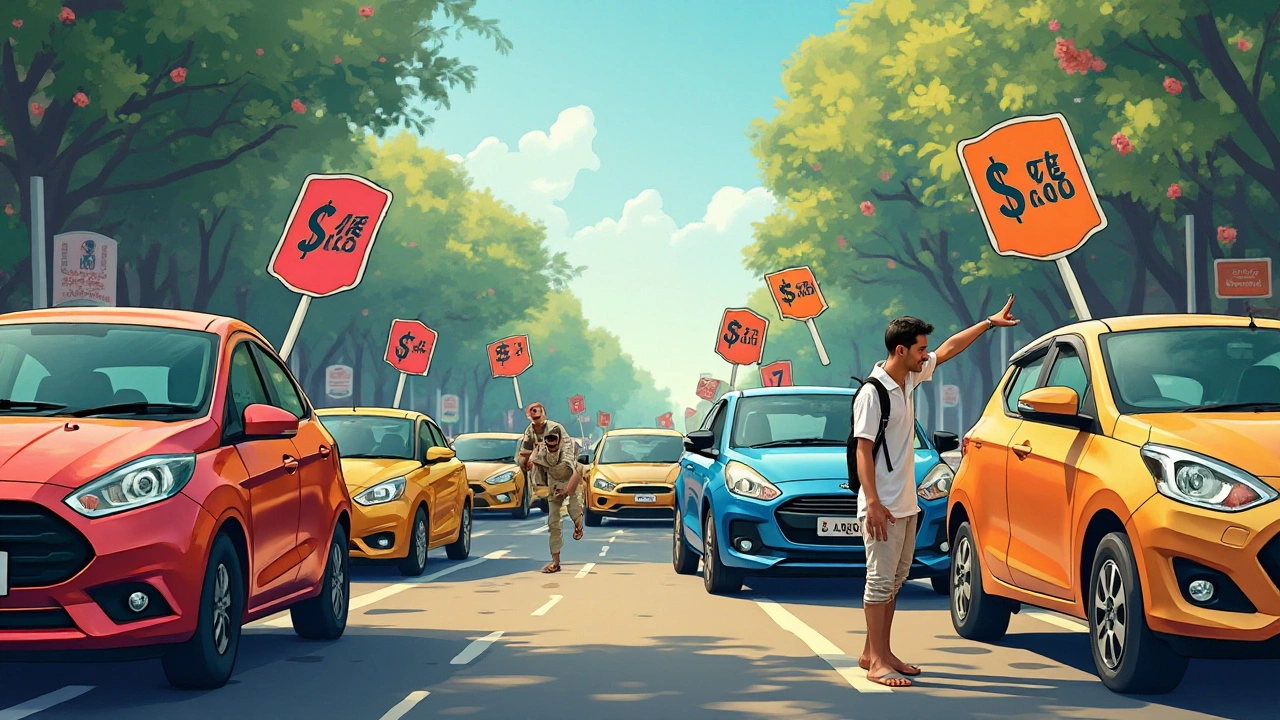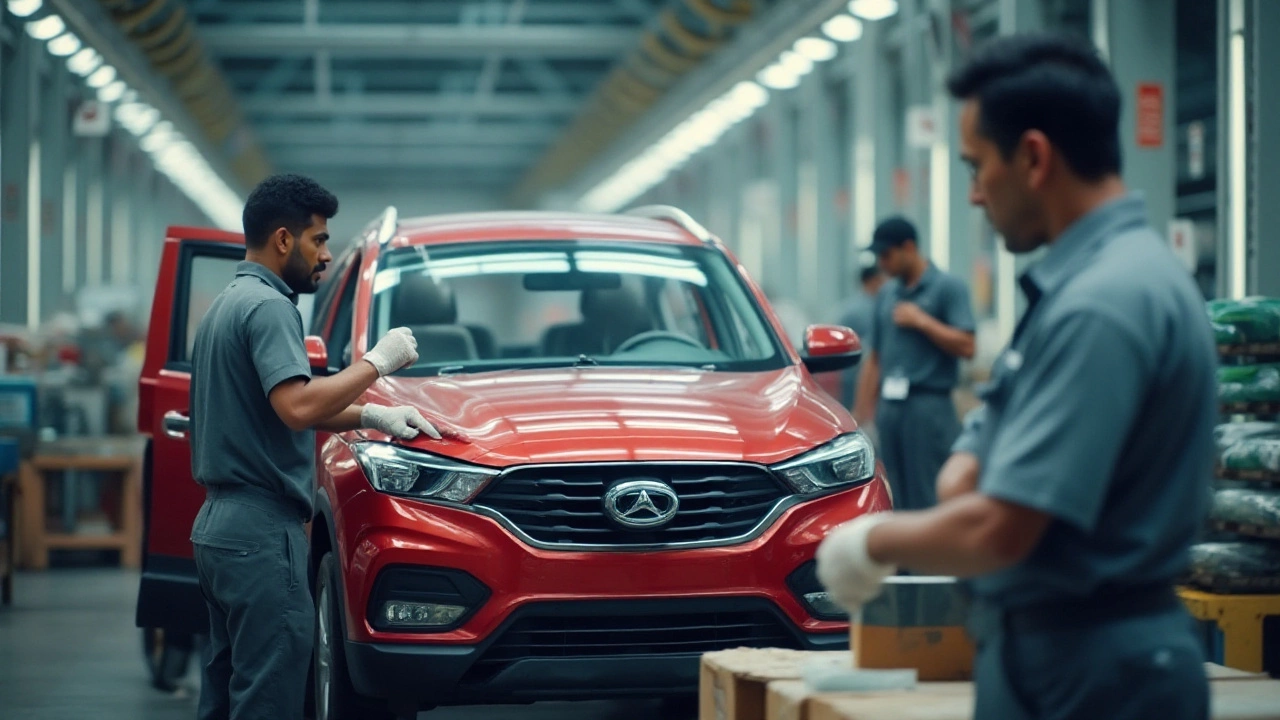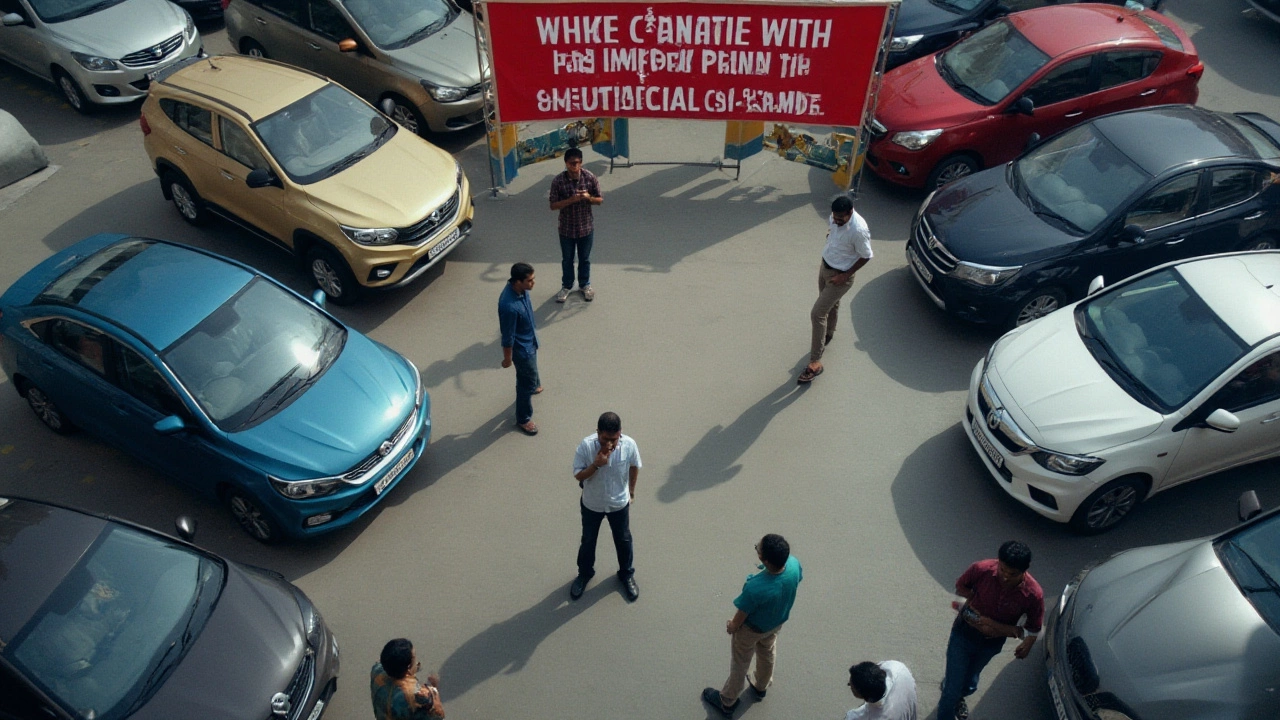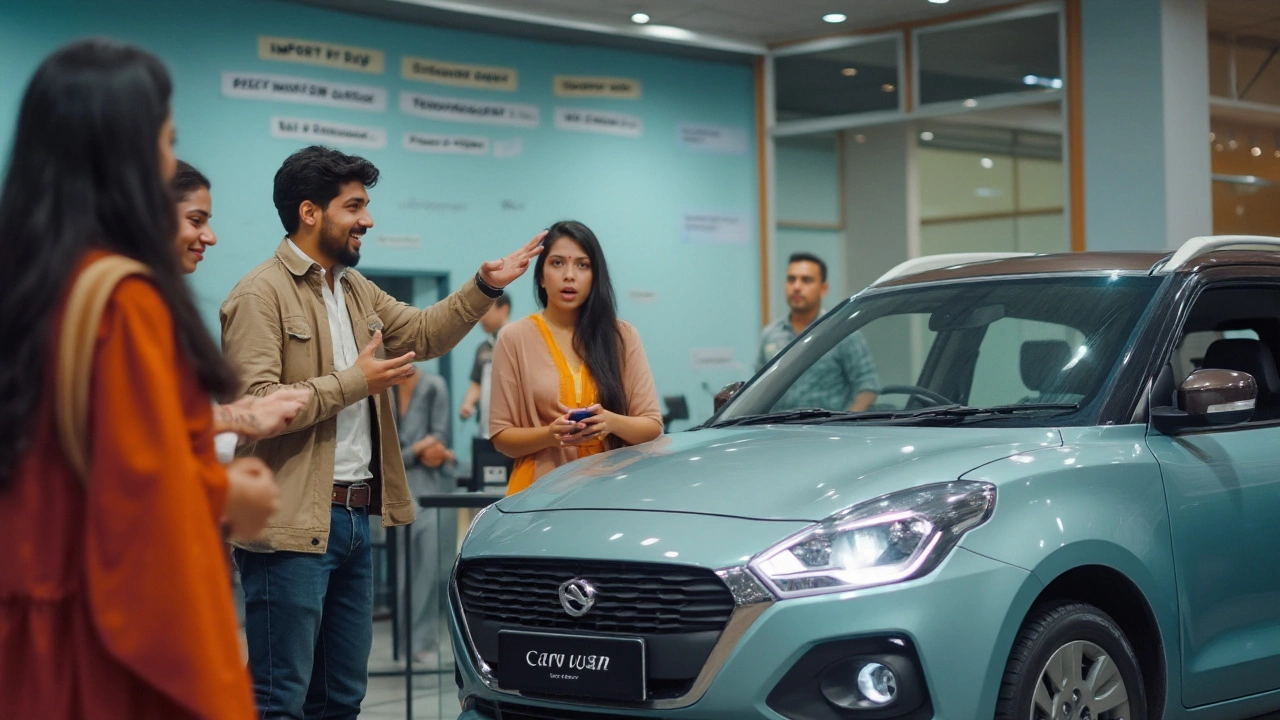Have you ever looked at the price of a car in India and wondered why it seems so steep compared to other countries? You're not alone. Unlike what many might think, the cost of cars in India isn't just about the manufacturers charging more. It's a complex play of several factors that come together to create this scenario.
From hefty import duties and taxes to the rising costs of raw materials, there's much to explore. India also faces unique regulatory and technological challenges that add up to the final amount consumers have to pay. Let's dive deep into these elements to understand what makes Indian cars so expensive.
- The Impact of Import Duties and Taxes
- Raw Material Costs and Their Influence
- Technological Advancements and Consumer Demands
- Regulations and Their Effect on Pricing
The Impact of Import Duties and Taxes
Import duties and taxes often top the list when dissecting why Indian cars carry a hefty price tag. India, with its booming automobile market, has made strategic decisions to protect its domestic industries from being overrun by foreign competition. This protection largely comes in the form of high import duties, which can stretch to a whopping 125% on completely built units (CBUs). Such stringent taxation ensures that foreign cars come with an inflated price, forcing many consumers to turn to domestically manufactured alternatives.
Yet it's not just the import duties on vehicles themselves. Components and spare parts also attract significant import tariffs, adding to the manufacturing costs. Consider the luxury segment; high-end models often require specialty parts, which aren't manufactured locally. As a result, manufacturers end up relying on imports, which drives up the cost and influences the final price tag.
According to a recent report by Times of India, "The import duty on auto components ranges from 7.5% to 15%, which substantially increases production costs."These dynamics play a key role in keeping the prices of Indian cars as steep as they are.
The government's goal here is two-fold: to promote the Make in India initiative and to encourage manufacturers to set up shop within its borders. By placing high tariffs on imported goods, the aim is to create enough incentive for automobile giants to invest in local manufacturing plants, thereby boosting employment and leading to self-sufficiency in production capabilities. While this makes sense from a macroeconomic perspective, the initial transition proves costly, keeping prices elevated during the shift.
Additionally, often overlooked are the state taxes and cess that layer on added costs. Each Indian state can impose its own tax structure, causing price inconsistencies from one region to another. The cascading effect means that, even within India, the car prices can dramatically vary based on location alone. Car prices in a metro city like Mumbai will differ from those in smaller cities due to disparate state levies and road taxes.
This complex tax regime isn't just limited to new cars. The pre-owned market is equally affected, with a mix of value-added tax (VAT) and Goods and Services Tax (GST) trickling down to increase the margin owners calculate before reselling. All these factors coalesce to craft a challenging landscape for prospective car buyers. Thus, even as the Indian car market continues to expand, these economic structures deeply impact car prices, leading to frustration for many consumers seeking affordability.

Raw Material Costs and Their Influence
The automobile industry in India is significantly affected by the rising costs of raw materials, and this is a key factor driving up the prices of Indian cars. Steel, which forms the backbone of car manufacturing, has seen fluctuating prices due to global demand and supply chain disruptions. With India being one of the fastest-growing economies, there is a substantial domestic demand, which puts additional pressure on these raw material resources. As steel prices go up, so do the costs of car manufacturing, which inevitably get passed down to the consumer.
Similarly, the prices of aluminum, rubber, and plastic, which are vital for manufacturing numerous car components, have seen notable hikes. Global factors like trade wars and tariffs can drastically alter material costs due to imports. Manufacturing any automobile demands these components in multiple stages, and cost increments at each step multiply the final retail price. Additionally, manufacturing enhancements and shifts towards sustainability have necessitated the use of more expensive, recycled, and eco-friendly materials, further impacting costs.
Consider this: according to a report by the Federation of Indian Chambers of Commerce & Industry (FICCI), the cost of production in India has risen by 20% over the past three years due to raw material costs alone. While these figures might appear overwhelming, they are a testament to the challenges faced by car manufacturers in maintaining competitive pricing amidst soaring raw material expenses. The Indian automobile industry also endures increased costs due to logistics and transportation. India is vast, and moving materials across long distances adds to the financial burden. Cars produced in the southern or northern parts have to cater to buyers in different geographies, and logistics become a massive cost factor.
"The metal index has significantly pressured the auto sector," said a leading automobile analyst at ICRA, highlighting the relentless impact of material costs on the industry's pricing strategies.
Another aspect that can't be ignored is the reliance on imports for certain high-quality materials or components not readily available domestically. The deficit leads to dependency on international suppliers, and any geopolitical tension or alteration in global pricing directly affects the local market. Exchange rates further complicate matters, making the import of materials unpredictable and sometimes prohibitively expensive. In the end, these elements combine in such a way that price considerations become an intricate balancing act for manufacturers, reflecting in car prices throughout India.

Technological Advancements and Consumer Demands
The modern consumer is more tech-savvy than ever, with rapidly changing preferences that put constant pressure on automakers to innovate and diversify. In India, the quest for cutting-edge technology in vehicles has become a primary driver, impacting the final price buyers see. Indian cars are now equipped with features like AI-based driver assistance, touch-screen infotainment systems, and hybrid engines aimed at reducing emissions, all designed to meet the expectations of today’s discerning customers.
These advancements don't come cheap. The research and development phase is costly, requiring significant investment, which is ultimately factored into the cost of a vehicle. Manufacturers are tasked with integrating the latest tech while ensuring safety, reliability, and performance. Consumers today demand more than just transportation from their vehicles; they seek a personalized and connected experience. This has led to a growing focus on smart technology and connectivity, which demands both sophisticated software and hardware.
Many car buyers now prioritize models that come with advanced safety features like lane-keeping assistance, adaptive cruise control, and automatic emergency braking. These systems involve a network of sensors and cameras that add to production complexity and cost. The shift towards electric and hybrid vehicles also plays a role. As India makes strides towards adopting cleaner energy, the technology required for efficient electric and hybrid systems contributes significantly to the cost of manufacturing.
Let's not forget the impact of brand competition in this sector. To capture market attention, companies like Tata Motors and Mahindra & Mahindra are continuously pushing the envelope, embedding new technologies and reshaping consumer expectations. According to the Society of Indian Automobile Manufacturers, the sales of vehicles with advanced tech features have seen a considerable increase, prompting more brands to follow suit. Implementing these technologies is not just about staying relevant; it's also about meeting strict emission norms set by the government, which have seen updates in recent years.
The automotive industry faces rapid changes, and keeping up with demands for cleaner and more efficient vehicles is not just an option but a necessity," says a spokesperson from The Automotive Research Association of India.
As the industry moves towards sustainability, there's a significant push for innovation. The electric vehicle (EV) market, for instance, demands infrastructure for charging stations, batteries, and more, which requires capital and affects car pricing. These efforts reflect in the price of the final product, often making consumers question the value proposition. However, for many, the promise of lower fuel costs, reduced emissions, and the thrill of the latest technology seem to make that price tag worth it.
The car industry is a testament to how consumer expectations can drive technological evolution. This cycle of demand and supply plays a visible role in determining the pricing strategies of Indian cars. In the future, as technology becomes more accessible and scalable, the hope is that prices could level out, making these advanced vehicles more attainable for the average consumer.

Regulations and Their Effect on Pricing
Understanding the effects of regulations on Indian cars requires us to peel back several layers of legislative complexities. In India, the automotive sector is not just a sprawling industry but a significant contributor to the nation's GDP, which means any change in policy tends to have ripple effects. The regulatory landscape has been evolving at a brisk pace, driven by environmental concerns and safety considerations, which promptly reflect on pricing. Ever since the Indian government pledged to bring down emission levels, manufacturers have faced the challenge of modifying their vehicles to meet stringent standards. Such advancements do not come cheap, and the cost is inevitably passed on to the consumer, raising car prices.
Over the past few years, emission norms known as Bharat Stage (BS) have tightened significantly. As of April 2020, India leapfrogged from BS-IV to BS-VI, skipping BS-V entirely to match global standards. This move was necessary to combat the deteriorating air quality in urban areas but required a shift in technology that came at a high price. Incorporating BS-VI technology involved redesigning engines, upgrading components, and adopting complex systems to reduce pollutants. This investment in compliance costs billions, which, interestingly, pushes retail prices upwards, making their cars more costly. Such was the impact that a report from ICRA, a credit rating agency, notes around a 10-15% increase in car prices because of this transition.
Safety regulations further influence the cost equation. In recent years, the Indian government ramped up its road safety initiatives following alarming road accident statistics. New models now need to incorporate airbags, ABS (anti-lock braking systems), and other safety features. For instance, from October 2019, all passenger vehicles must have specific safety tools installed, according to the Bharat New Vehicle Safety Assessment Program (BNVSAP) guidelines. These features are critical for passenger safety but add to baseline manufacturing costs. On the bright side, such directives have pushed manufacturers to innovate while emphasizing consumer safety, albeit impacting prices.
The automobile industry in India also wrestles with fluctuating tax schemes and policies that create an ambiguous pricing landscape. The Goods and Services Tax (GST) reform, introduced in July 2017, streamlined the tax structure but added to car prices because of higher levies on luxury and mid-range cars. Compensation cess on top of GST further adds to the tax burden a buyer faces. These levies, intended to promote eco-friendly vehicles and curtail luxury imports, often result in unexpected fluctuations in the automobile market. As Amrit Chandan, CEO of climate-tech startup Aceleron, pointedly observes,
The price discrepancy reflects not just the cost of production but aspirations to support larger governmental policy missions.Drivers in the Indian automobile sector thus find themselves caught between aspirations for advanced mobility solutions and the financial burden of regulatory compliance.

